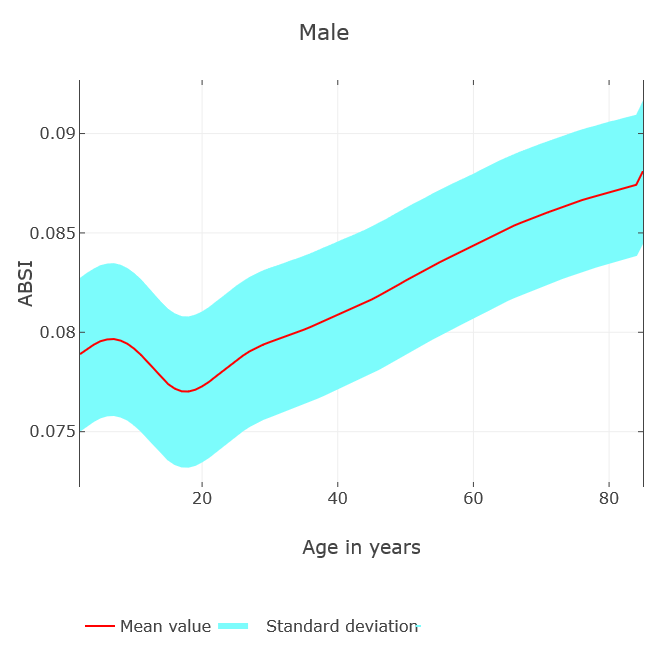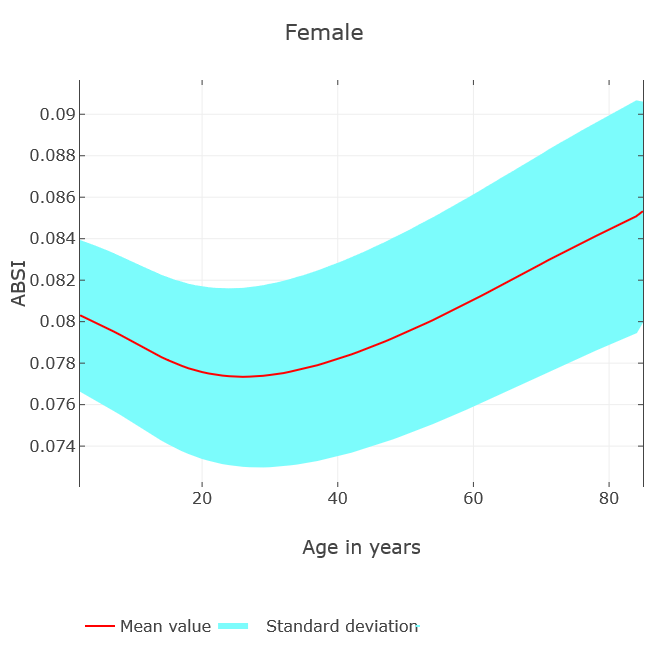What is ABSI
A Body Shape Index (ABSI or just BSI) is a statistic for determining the health consequences of a person’s height, weight, and waist circumference (WC).
The addition of WC to the BSI is thought to make it a better predictor of mortality risk from excess weight than the traditional BMI. ABSI has just a small relationship with height, weight, and BMI, suggesting that it is unaffected by other anthropometric factors in predicting mortality.
Based on the A Body Shape Index, the ABSI calculator calculates the probability of early death (ABSI). Age, sex, body height, body mass, and waist circumference are the only variables required by the ABSI calculation.
ABSI is a better indication of the risk of mortality from excessive weight than the normal body mass index since it includes the previous measurement (BMI). Read on to learn more about the A Body Shape Index’s benefits and drawbacks, as well as the ABSI algorithm!
BSI (A Body Shape Index) Calculator
Nir and Jesse Krakauer created the A Body Shape Index using data from the National Health and Nutrition Examination Survey. The authors’ goal was to create a formula based on waist circumference that is roughly independent (least reliant) of height, weight, and BMI. They created the A Body Shape Index, which incorporates five variables:
- sex;
- age;
- weight;
- height; and
- waist circumference.


A Body Shape Index formula – ABSI formula and ABSI z score:
- We present the ABSI formula below:
| ABSI = WC/ (BMI2/3 * height1/2) |
where:
WC– the waist circumference, expressed inm;height– expressed inm; andBMI– expressed inkg/m², and is calculated using the following formula:BMI = weight / height².
- To estimate the risk of premature mortality, we can calculate the ABSI z score as follows:
| ABSI z score = (ABSI – ABSImean) / ABSISD |
where:
ABSI z score– calculated based on the mean and standard deviations ofABSIcalculated for the given age and sex;ABSImean– the mean ABSI for the chosen age and sex; andABSIsᴅ– the standard deviation of the calculated ABSI for the chosen age and sex.
This calculator takes its mean and standard deviation statistics for each age and sex group from data available for the NHANES population.
Based on the ABSI z score, the results are classified into five premature mortality risk levels:
| ABSI z score | Mortality risk |
|---|---|
| < -0.868 | Very low |
| -0.868 and -0.272 | Low |
| -0.272 and +0.229 | Average |
| 0.229 and 0.798 | High |
| >0.798 | Very high |
How to use A Body Shape Index (ABSI) calculator?
- Choose your sex.
- Enter your age (the values must range from 2 to 85 years).
- Enter your height. Don’t worry about the units – our ABSI calculator has a built-in length converter.
- Enter your weight. Again, don’t worry about the units conversion.
- Input your waist circumference. It should be measured horizontally around the waist, at the level of your belly button.
That concludes our discussion. You may check your ABSI score, ABSI z score, and the interpretation of your result in the “Results” section.
A Body Shape Index – pros and cons
The ABSI indicates the amount of abdominal fat in relation to other body sections. The greater the ABSI, the higher the proportion of abdominal fat. ABSI has just a small relationship with height, weight, and BMI, showing that it is unaffected by other anthropometric factors in predicting mortality.
It can also tell you whether you’re at risk for heart disease, cancer, or diabetes. The risk determined using the ABSI score, on the other hand, is solely dependent on the body model. Other variables that affect life expectancy, such as diseases, are not included.
